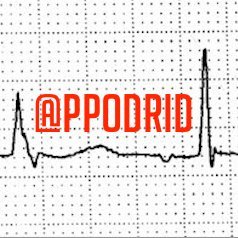
Philip J Podrid MD
@PPodrid
Followers
6K
Following
17
Media
385
Statuses
812
ECG Educator | Electrophysiologist | Professor @The_BMC | Alumni @BrighamFellows & @NYUMed | All tweets are my personal opinion 🩺
Boston, MA
Joined December 2019
26 year old with a history of palpitations. What does this ECG show? #PodridECGs #ECG #meded #cardiotwitter
7
4
38
NSR. QT interval long due to a very broad T wave. T waves are asymmetric in the opposite direction of normal-ie faster upstroke and slower downstroke. These findings c/w cerebral T waves.
0
0
3
P wave alternans along with qrs and t wave alternans seen with large effusion or tamponade due to the pendulum effect. P wave alternans not seen with other causes of qrs and t wave alternans.
0
0
1
NSR with RBBB and lfpb and old AWMI. QRS and T wave alternans seen with cardiomyopathy, CHF, acute MI, and rapid and reg SV tachyarrhythmia. Also seen with large pericardial effusion or tamponade which is the Ex here as there is also P wave alternans (seen best in lead2)
0
0
2
75 year old who had a syncopal episode and fell presents to ER with confusion. What is seen on the ECG? #PodridECGs #ECG #meded #cardiotwitter
16
16
125
Patents presents with chest pain and sob. What does the ECG show and what is the cause of the symptoms? #PodridECGs #ECG #meded #cardiotwitter
6
6
24
NSR with 2 different PR intervals due to dual AV nodal pathways, the basis for AVNRT. Different QRS amplitude due to 2 different locations where impulse enters the His bundle and slightly different conduction to ventricles.
0
1
2
32 year old without any cardiac history except for occasional palpitations. No ECG obtained during palpitations but this is baseline ECG. What does the ECG show and what is the most likely etiology of the palpitations? #PodridECGs #ECG #meded #cardiotwitter
8
19
38
Ashman effect may last for several complexes. Theoretically because with RBBB all vent activation is thru LB and there may be retrograde activation of RB from LB keeping its refractoriness prolonged for a longer period of time.
0
0
1
AF with complexes that have RBBB due to Ashman effect. The complexes with RBBB follow a long-short RR interval and there are other RR intervals as short or shorter without the RBBB- hence not rate related.
0
0
1
45 year old woman presents to ER with palpitations and SOB. What does the ECG show? #PodridECGs #ECG #meded #cardiotwitter
9
4
23
NSR with diffuse ST segment elevation (ST segments concave and have avnormal morphology). T waves asymmetric and normal morphology. There is PR segment depression. Also Spodick sign, ie downsloping TP segment in multiple leads. These findings consistent with pericarditis.
0
0
2
34 year old seen in ER for chest discomfort that is sharp and pleuritic- worse with lying down. What does the ECG show and what is the diagnosis? #PodridECGs #ECG #meded #cardiotwitter
21
10
93
Rhythm reg irreg. After pause sinus p wave and reg p waves during long intervals-NSR rate 80. Interpolated junct premature beats with bigeminy. After pause sinus beat and then junctional complex with rbbb due to Ashman effect (long-short and other short intervals without rbbb).
0
0
2
57 year old woman with no heart disease complains of palpitations. In ER heart rate rapid and occasionally irregular. What is the diagnosis? #PodridECGs #ECG #meded #cardiotwitter
7
5
27
AIVR with retrograde or VA Wenckebach followed by echo beat that had a RBBB.
0
1
1
76 year of with a nonischemic cardiomyopathy and PVCs presents for a preop evaluation and is found to have an irregular rhythm. What does the ECG show? #PodridECGs #ECG #meded #cardiotwitter
4
6
19
NSR with RBBB (tall r wave in V2 due to early transition) , LAFB, 1st degree AV block and initially 2:1 AV conduction. At end AV dissociation due to CHB with junct escape. 2:1 AV block thus Mobitz 1. Venticulophasic arrhythmia seen.
0
0
0
75 year old with history of a nonischemic cardiomyopathy presents with episodes of lightheadedness. What does the ECG show? #PodridECGs #ECG #meded #cardiotwitter
5
5
14
NSR with non conducted PACs in a bigeminal pattern (note the notching of the T wave due to the superimposed P wave).
0
0
1
